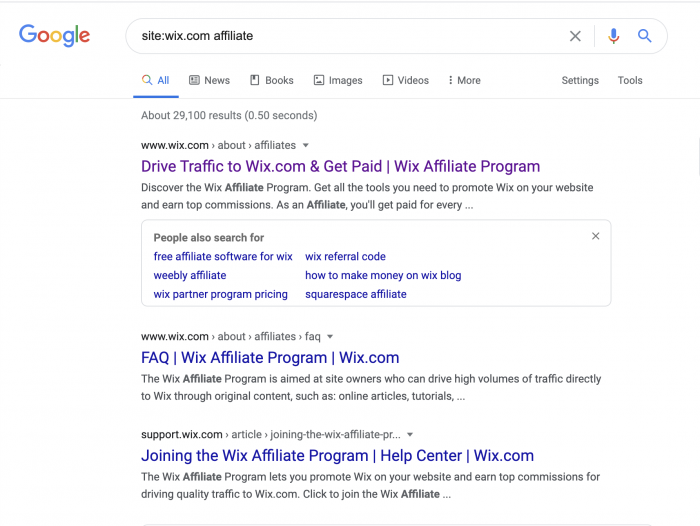As blogging has grown in popularity over the years, more and more people have been able to monetize their online presence. Now, there are many articles out there, giving dozens of different strategies on how to make money from blogging, but in essence, there are only three ways to do it. You can either sell ad space on your blog, sell your own product, or sell other people’s products.
Now, there are pros and cons to all three of these strategies. Which strategy will work best for you depends on the type of blog you have and the time and money you have available.
1. Sell Ad Space
Ads get a lot of hate, but they’re still among the most common methods of blog monetization. Setting up an ad account is very easy and takes little time. The real trick with ads is finding the medium between showing enough ads to make money but not so many that you annoy them. Bombarding your users with ads is a sure-fire way to get them to leave and never want to come back.
So, how do you set up an ad account? The best way to get started is to use Google AdSense. Google AdSense is the most commonly used platform for setting up ads on your account and is used by millions of websites worldwide.
Once you’ve set up your add account and pasted the code Google gives you into your webpage, you can add as many ads as you want. But remember, our goal isn’t to overwhelm our users with ads. It’s essential to keep a pleasant user experience above everything else. Therefore, you should only start with one or two ads and see if your website traffic has changed.
If, after you implement the ads, you see your bounce rate increase (the percentage of users that viewed only a single page before leaving), you know that the ads have turned off your user. You can check your bounce rate for free with Google Analytics to see any changes.
Now, this may sound great right now, but there’s always a catch. The commission that you will receive depends heavily on the CPC of the niche you are in. The commission per click you can receive can vary from a few cents per click to $10 and more.
Your profitability from using ads also heavily relies on your blog traffic. Only around 2% of your traffic will actually be clicking on your ads. Therefore, for this strategy to really make you money, you should have thousands of monthly visitors on your website. Although there are niches that can pay upwards of $10 a click, the average CPC for Google Ads is between $1 and $2.
2. Sell Your Own Product
The most lucrative strategy for making money on your blog is by selling your own product or service. Some of the more common ways you’ll see this play out are through the sale of online courses and workshops, ebooks, speaking gigs, consulting, or software as a service (SAAS).
Companies like SmartBlogger, SmartPassiveIncome (SPI), and CrazyEgg all have monetized their blog by selling their own products through their website. SmartBlogger focuses more on the sales of their online courses and workshops. SPI makes its money on a combination of products like book sales and course sales. CrazyEgg sells a SAAS subscription that provides tracking tools such as Heat maps, Scroll maps, Overlays, and Confetti tracking.
The reason why this strategy is so lucrative is your costs are very low. When selling your own product, especially a digital one, your COGS are close to nonexistent. When selling a course online, for example, you can download a learning management system like LearnDash and pay $159 for the entire year to host your course. Now, let’s say you sell that course for $30. You only need to sell it about five times to break even. Everything after that fifth sale is profit.
Although this may sound very attractive, there are drawbacks to this method as well. This strategy takes the most time out of all the strategies mentioned. Whether you are creating a course, writing an ebook, or selling software, none of it is built overnight. You need time, and depending on the type of product, money, to successfully execute this method.
3. Affiliate Marketing
Affiliate marketing is my favorite strategy of generating income with a blog, especially for beginners. Affiliate Marketing is when a company pays you a commission for helping to sell their products. How this works in practice is let’s assume you have a blog on tea, and you blog about everything tea-related. You cover the different types of tea leaves you can use, how to make iced tea, where to buy tea, how to cook with tea, etc. Instead of trying to sell ad space on your tea blog, or try to create your own tea, you can sell another company’s tea through your website.
To do this, you just need to add links within your blog post that redirect your user to the seller’s page. The links that you add within your blog post are specially made just for you so that the seller knows when to attribute a sale to you. Now, the amount you can make from promoting affiliate links depends on the product you are promoting. It can range anywhere from 3% to upwards of 50%.
Usually, what you’ll see is that digital products pay a much higher percentage than physical products. This is because of the example I showed earlier where the COGS for digital products are so low that these sellers can offer a high commission per sale.
When it comes to affiliate marketing, you want to keep in mind that you are what you promote. A slippery slope in affiliate marketing is promoting products or services just because they have a high payout rate. Affiliate marketing works best when you promote products that are actually beneficial, not just ones that offer high commissions.
Another thing to keep in mind when doing affiliate marketing is making sure you are a user of whatever you are promoting. How can you promote a product on your website if you have never used it?
The easiest way to find affiliate products to promote is to compile a list of products you have used and enjoyed before and searching their website to see if they have an affiliate program. The best way to do this is by finding the sites of products or services you already use and enter “site:theirwebsite.com affiliate.”
For example, if I wanted to check if Wix had an affiliate program, I would enter “site:wix.com affiliate” and look at the results. In this example, I see Wix’s affiliate program is the very first link.
Again, as much as these methods do have upsides, there are downsides as well. In regards to affiliate marketing, you are only making a percentage of the actual sale, not the entire thing. You also are driving traffic away from your website, and if the user does sign up for the service, you don’t get their email information to add them to your own email marketing efforts.
Another downside is that you don’t have any control over the affiliate program. At any time, a vendor can discontinue their affiliate program or cut back on their commission structure. For example, Amazon cut some of its affiliate commission rates by more than 50 percent in April.
Key Takeaways
There are only three ways to make money blogging: selling ad space, selling your own product, or selling other people’s products. Each strategy has its pros and cons. However, the best strategy for someone just starting to monetize their site would be affiliate marketing. This strategy takes the cake because you don’t need as much traffic to be profitable like with ads, and you also don’t need to take the time to create your own product. Nonetheless, all of these strategies have grossed bloggers a full-time income. Figuring out which one is best for you and your website is up to your discretion.
Find a Home-Based Business to Start-Up >>> Hundreds of Business Listings.















































